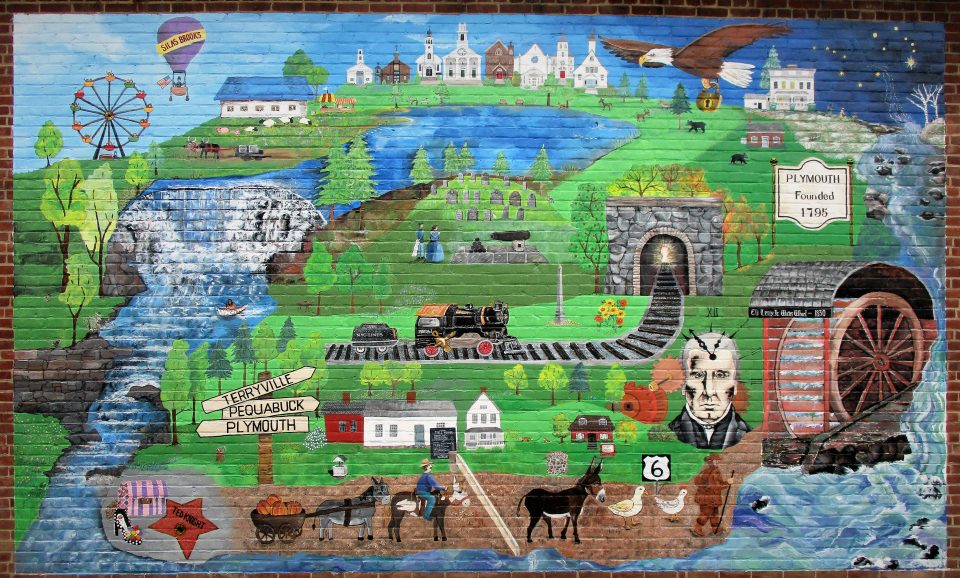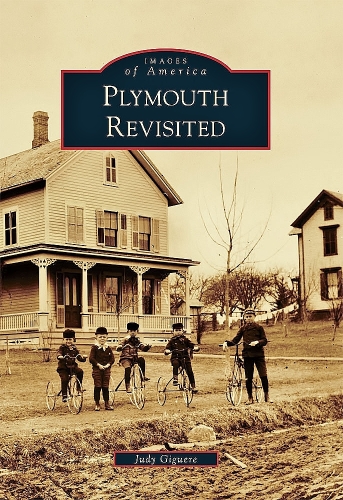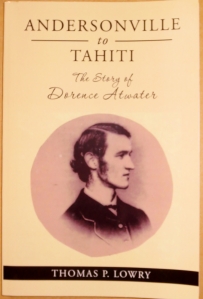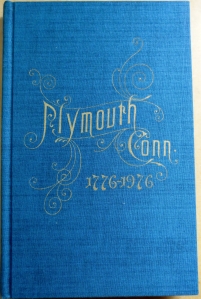Home » Search results for 'atwater'
Search Results for: atwater
Atwater Monument and other Historic Sites in Plymouth
Dorence Atwater Monument- Tribute to a Civil War Hero
The monument honoring Dorence Atwater, Plymouth’s Civil War hero, is on a hill overlooking Baldwin Park on Main Street in the Terryville section of Plymouth. In 1861, Atwater enlisted in the Union Army at the age of 16, was captured in July, 1863, and sent to the notorious Confederate prisoner of war camp at Andersonville, Georgia in February, 1864. While there, he was concerned that the identities of the dead would not be provided to their families, so he secretly kept a list of the 13,000 Union soldiers who died in captivity. When he was released from Andersonville, he smuggled out his list. After the War, he returned to the prison with Clara Barton, (who later founded the American Red Cross), and properly identified the dead soldier’s graves.
Because of his efforts, the families and friends of the missing soldiers were able to learn the fate of their loved ones. He was rewarded by being named the American consul to the Seychelle Islands, later became ambassador to Tahiti, and married a Polynesian princess, Moetia Salmon. He became a successful businessman, owning a shipping line, a pearl business, and a vanilla bean plantation. He was also friends with Robert Louis Stevenson, who used Atwater for a character in one of his books, The Ebb-Tide, which took place in Tahiti. In the book, the character of “Attwater” is a successful pearl trader, a business that Dorence Atwater was also in. The Terryville Library has a copy of the book that can be taken out.
On Memorial Day, 1907, the monument, consisting of a plaque and cannon, was dedicated, with Clara Barton in attendance. Atwater returned to Terryville in 1908 to see the monument.
.
.
.
Click here to see the interpretive signs that the Historical Society installed:
dorence atwater sign no. 1. dorence atwater sign no 2
.
.
.
.
.
.
.
.
.
.
.
.
.
.
.
Mass burial of Union prisoners at Andersonville, GA. Confederate prison camp. From the Andersonville National Historic Site. Photo credit: Andrew Riddle
.
List of the Union soldiers buried at Andersonville, GA
courtesy Thomaston Historical Society
. A copy of the Death Register from the National Archives
https://archive.org/details/listofunionsoldi01atwa

Painting of Andersonville prison camp by Thomas O’Dea, who was a prisoner. The painting was done after the War.
Courtesy Andersonville National Historic Site
.
.
.
.
.
The gravestone of Dorence Atwater’s parents in Hillside Cemetery in the Terryville section of Plymouth, CT
Atwater’s mother died two months before he was captured. We don’t know if he knew of her death. His father died shortly after he returned home from the War.
.
.
.
.
.
.
.The birthplace of Dorence Atwater is at 192 South Eagle Street, Terryville. It is a private residence. The photograph is from the the Memoirs of Francis Atwater, Dorence’s younger brother.
The memoirs were donated to the Society by Chris Foard.
Click here for the chapter dealing with Clara Barton Memoirs of Francis Atwater
Railroad Pass for Clara Barton and Dorence Atwater.
Courtesy US General Services Administration and Library of Congress.
.After the War, Atwater and Barton went on a speaking tour to raise awareness of their mission to locate the missing soldiers. They were issued free passes from various railroads to travel to their engagements.
.
.In 1865, Clara Barton organized the Missing Soldiers Office in Washington, D.C. to provide information to the 60,000 families who tried to find out what happened to their loved ones who were missing in action. Atwater assisted Barton in this endeavor, and with the help of the 13,000 names on his list, they were able to account for 20,000 Union soldiers. Atwater and Barton lived in the boarding house where the Missing Soldiers Office was located.
One of the legacies of Dorence Atwater and Clara Barton is that there was a much more concerted effort to learn the whereabouts of American MIAs in subsequent wars, including better means of identifying soldiers, such as wearing dog tags. During the Civil War, before a battle, soldiers would write their names on a piece of cloth or paper and pin it to their uniforms in hopes they would be identified if they were killed.
The Clara Barton Missing Soldiers Office Museum is at 437 7th St. NW in Washington, D.C.

The Missing Soldiers Office in Washington DC. Dorence Atwater and Clara Barton rented rooms on the third floor. Image courtesy of Stefan Hurray.
.Dorence Atwater’s Heroic Role
.
.
.
.
.
.
This poster advertising a speech by Clara Barton and Dorence Atwater is from the collection of Chris Foard. The “American Hall” was the first brick building in Thomaston, CT. It is on Main Street, and is now occupied by the law offices of Seabourne and Malley.
.
Diary entry of Dorence Atwater for May 28-29, 1867
. This entry from the diary of Dorence Atwater indicates that he and Clara Barton gave a speech at the Hotchkiss Hall in Waterbury, CT on May 28, 1867, then traveled to Thomaston, CT to give a speech on May 29. It mentions that they “stopped at Plymouth House”, presumably Atwater’s family home. Atwater also gave speeches on his own.
Poster for Dorence Atwater speech in Keene, N.H. We are indebted to Chris Foard, who has a passion for nursing history. He discovered Atwater’s diaries and the poster for this lecture at the Library of Congress. He has generously provided these images to the Historical Society.
.For more information about Dorence Atwater’s role in the Civil War, go to http://www.nps.gov/ande/historyculture/dorence_atwater.htm
You can also buy copies of this book at Antiques at the Green, 703 Main Street, Plymouth, CT 860-283-0689
Andersonville to Tahiti, The Story of Dorence Atwater
.
.
.
.
.
.
.
.Moetia Atwater was the daughter of a British banker, Alexander Salmon, and Ari’itaimai, granddaughter of the former King of Tahiti.
She was educated in Europe. This photograph is probably from her graduation. She lived from 1848-1935. She was married to Atwater in 1875 until his death in 1910. She accompanied Atwater when he returned to Terryville in 1908.
Dorence Atwater died in 1910 in San Francisco, and is buried in Tahiti. His gravestone is shown below. It is in a churchyard protected by a rail fence.



Click here for a video from Public Broadcasting about Clara Barton that mentions Dorence Atwater
http://video.pbs.org/video/1915321989/
Lock Museum of America (www.lockmuseumofamerica.org)
The Lock Museum of America is at 230 Main Street, across the street from the original location of the Eagle Lock factory, founded in 1854.
It has been featured in many travel guides for those seeking unusual sites off the beaten path.
The Museum houses an extensive lock collection that includes a Cannon Ball Safe, 30 early era time locks, a large number of British Safe Locks, Door Locks, Padlocks, Handcuffs and Keys, and more.
The Eagle Lock Room contains over 1,000 locks and keys manufactured from 1854 to 1954. The Bank Lock Room comprises a selection of bank locks, vault locks, safe locks and time locks.
The Corbin-Russwin Room contains a large display of ornate hardware. Several pieces are gold plated and enameled. One of the animated displays shows how a pin tumbler lock works.
A large display of mounted door knobs and escutcheons made by Russwin and P & F Corbin during the Victorian era are extensively detailed in styles such as Roman, Greek, French and Italian Renaissance, Gothic, Flemish, and Elizabethan English.
The Yale Room accommodates locks manufactured from 1860 to 1950. One of the attractions here is the original patent model of the Mortise Cylinder Pin Tumbler Lock designed by Linus Yale Jr., in 1865. While this device is considered the greatest invention in the history of lockmaking, it is certainly not without historical precedent. Close by is a 4,000-year old Egyptian pin tumbler lock.
The Antique Lock Room contains a large display of colonial locks and Ornate European Locks dating to the 1500s. There is also a handcuff collection!
The museum is a fascinating look at the technology used over the centuries to “keep honest people honest”.
.
The Lock Museum of America also has an escape room called “Lock Museum Adventure”
.Date Stone from the Eagle Lock factory-1889
1835 Highway Marker
In 1835, a highway mile marker to Hartford was placed on the south side of Main Street, near the Plymouth/Bristol town line (corner of Bushnell Street), signifying that Route 6 has been a well traveled roadway for a long time. The stone monument specifies the distance to Hartford and Litchfield. Often, tolls were collected at these sites. This marker is made of brownstone and looks a bit like an old tombstone. It is roughly carved and very weathered. It is inscribed:
19 Miles to Hartford
13 Miles to Litchfield
1835
The date of 1835 is confusing as other records state that the marker was placed in 1815, just a few years after the incorporation of the Town of Plymouth in 1795. This particular marker has been allotted a special place in Plymouth with respect to its place in our history. As you can see from the photo, the town has graciously landscaped around this historical remnant of the early days of Plymouth and our nation.
Stone mileage marker from 1835 Photo credit: Judy Giguere
Horseshoe Falls
In 1851, Eli Terry built a dam on the Pequabuck River to supply water power for a new factory, the Terryville Manufacturing Company. Located on Canal Street, the shop made clocks and clock parts. Water from the pond was diverted down a canal to turn a water wheel that generated 35 horsepower at full speed. In 1864, the factory became the Eagle Bit and Buckle Company, manufacturers of harness bits and buckles for the Union Army during the Civil War. Eventually, locks for mailbag pouches were made here. Later a sawmill occupied the site, and by 1908, it was a woodturning plant (Charles Allen Woodturning) that made handles for all sorts of carpentry tools, such as braces, files, and mallets. They also made gavels and wooden spigots for barrels, furniture knobs, and even the wooden flagpoles for PT Boats that served in the South Pacific in World War II.
Click here for information about PT Boats
A waterwheel powered the shop until 1913 when it was replaced by an electric motor.
The bridge on Canal Street that provides this view of the Falls is named after Ted Knight, who starred in ” The Mary Tyler Moore Show” in the 1970s and in the popular film “Caddyshack”. He grew up on nearby Allen Street.
Greystone Falls – Birthplace of the American Industrial Revolution
The section of Plymouth known as Greystone is in the southern part of town, at the end of Greystone Road Extension. In the 1700s, enterprising folks built dams to harness the power of Hancock Brook to power a sawmill, a grist mill, and eventually a clock factory. From 1806-1808, Eli Terry built 4,000 wooden-geared clocks by being the first to mass-produce interchangeable parts. Before this time, each wooden gear had to be individually carved by a worker. Terry invented jigs and saws to make gears uniformly, so that if one broke, a new one could be inserted in its place. The Industrial Revolution in America began here.



The Falls and the site of the Clock Factory are on private property. Please do not trespass. The Historical Society periodically provides tours of the site with the owner’s permission.
Old Terryville Cemetery
The Old Cemetery at the corner of South Main Street and Agney Avenue in downtown Terryville has the gravestones of many individuals and families associated with the clock and lock industry that contributed to Plymouth’s history. For example, famous clockmakers Eli Terry and his son, Eli Terry, Jr., for whom Terryville is named, are buried here, as is Hiram Welton, a clockmaker who took over Eli Terry, Jr’s business after his premature death.
Eli Terry, Sr. is buried next to his second wife, Harriet, whom he married in 1840 after his first wife, Eunice, died in 1839. Eunice is buried in the Plymouth Burying Ground.Many individuals associated with the Eagle Lock Company and the Water Wheel are also buried here, such as James Terry, grandson of Eli Terry and son of Eli Terry, Jr., who created the Eagle Lock Company.
Click here for the Old Terryville Cemetery informational sign that is posted in the cemetery
Click here for Eli Terry cemetery list of gravestones
For more information about our region’s rich clockmaking heritage, go to www.clockandwatchmuseum.org
Eli Terry gravestone
.
.
Click here to see an old post card of the Eagle Lock Works eaglelockworks 1907 color post card
.
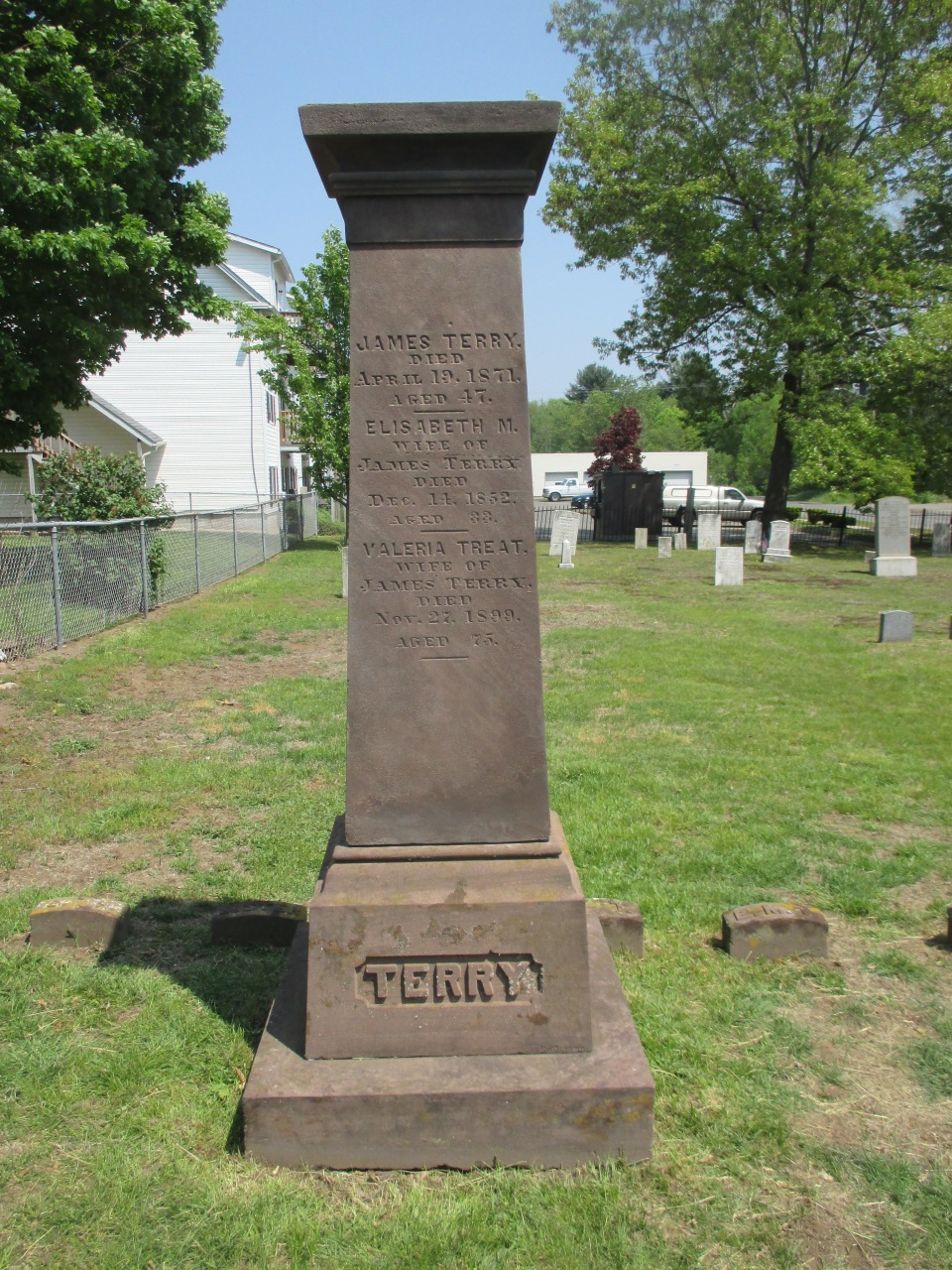
Front of the restored James Terry monument, installed in May of 2016.
An important step in the Old Terryville Cemetery project was the installation of the restored James Terry monument. Looks like new!
Gift Shop
Plymouth Revisited
Judy Giguere, Plymouth Town Historian, has written a fascinating book that includes almost 200 photos of Plymouth’s rich heritage.
It can be purchased at “Antiques at the Green”, 703 Main Street, Plymouth (across from the Plymouth Green). The store is generally open Thursday-Sunday. Call 860-283-0689 for hours.
.
.
Click here for Ghosts of Chippeny Hill book cover.
Chippeny Hill, located in the northeast corner of Bristol (then New Cambridge), Harwinton, and Plymouth has long been known as the home of Tories. Tories in Revolutionary War times were those that remained loyal to England, or maybe were just fond of the Anglican Church. After the French and Indian War, England needed to replenish is sorely depleted treasury. The King felt that since much of its expenditure was to protect the American colonies from French incursion, it only seemed right that the colonies should pay their share. The American colonies did not agree and the beginnings of the Revolutionary War struggles began. A contingent loyal to England gathered on Chippeny Hill. Their stories are today’s legends, ghosts and myths-the very fabric of early Connecticut and the subject of Judy Giguere’s new book, “The Ghosts of Chippeny Hill”.
Available at Antiques at the Green and on Amazon
Also Available at Antiques at the Green:
Andersonville to Tahiti, The Story of Dorence Atwater
Plymouth’s Civil War hero
.
.
.
.
.
.
.
.Plymouth, Conn. 1776-1976
by J. Francis Ryan
.
.
.
.
.
.
.
.
.
.
.
.
.
.
.
.
Welcome to the Plymouth Historical Society
The Plymouth Historical Society is a membership supported, not-for-profit organization dedicated to supporting local and American history.
We make Plymouth’s rich heritage come alive!
Mission Statement:
- To encourage interest and pride in the history of Plymouth and its surrounding areas.
- To discover, obtain, preserve and interpret artifacts of local significance.
- To share information with schools, organizations and the general public.
The Society manages the Alley House Museum and the adjacent Toll House Museum.
- Alley House Museum
- Toll House Museum
- We also have a building at the Terryville Fairgrounds that is open during the annual Terryville Fair (4th weekend in August).
Mailing Address:
Plymouth Historical Society
PO Box 176
572 Main St.
Plymouth, CT 06782
Telephone:
860-681-7935
Email:
Follow us on Facebook
https://www.facebook.com/search/top?q=plymouth%20ct%20historical%20society
We are happy to help you learn about Plymouth’s history! Feel free to email us with questions or for a tour of the Museum.
.Click on the link below to view “The History of Plymouth”, compiled by Francis Atwater in 1895 to celebrate Plymouth’s Centennial.
http://www.archive.org/stream/historyoftownofp00atwa#page/n3/mode/2up
Meetings:
We meet on the last Saturday of the month at 1PM at our Museum, located at 572 Main St., Plymouth.
We’ll see you at our next meeting on May 25, 2024!
The Museum is open during our meetings. You are welcome to come to our meetings and/or tour the Museum.
NOTE: Click on our “Events” tab above for the latest news.
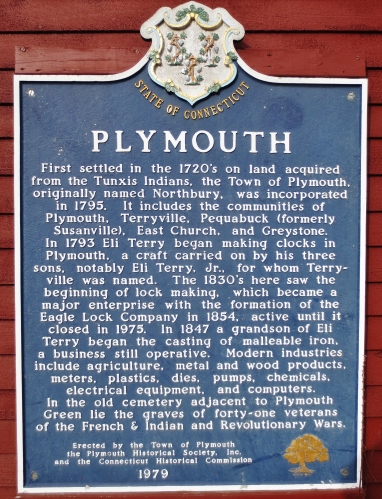
.
JOIN TODAY! Click here for the membership application: Membership form
.As a volunteer based organization, the Society relies on its members to assist in collection care efforts, to administer the educational programs, and to help with fund raising events.
Please see the list of opportunities below.
- Creating exhibits and displays, and demonstrating how things work
- Maintaining the Museum buildings
- Volunteering to open the Museum on weekdays or weekends.
Interested in any of these activities? Email us at plymouthct.history@gmail.com
NEW! PLYMOUTH 225 + 1 lecture series is now on YouTube
The series of lectures on Plymouth’s history held during 2021 is now available on YouTube thanks to the Terryville High School digital media students
